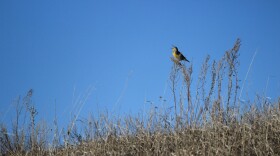Traveling across North Dakota, particularly areas northeast of the Missouri River, you'll occasionally see signs near wetlands that identify the area as a Waterfowl Production Area, or WPA.
The Duck Stamp Act was amended in 1958 to give the Fish and Wildlife Service authorization to purchase, through duck stamp dollars, wetland areas for preservation of waterfowl habitat. These tracts, mostly wetlands in association with adjacent grassland are managed to provide nesting habitat for waterfowl, other migratory birds and other wildlife, as well as resting grounds for the birds during their migration.
The WPAs were incorporated into the National Wildlife Refuge System in 1966 and in North Dakota are managed within eleven wetland management districts.
Providing critical habitat
WPAs are not just for waterfowl production. In addition to providing critical habitat for waterfowl, they also provide critical habitat for a variety of birds such as avocets, harriers also known as marsh hawks, herons, grebes, and a wide array of songbirds, plus mink, muskrat, and other mammals that call the marsh home. And then, of course, there are the plants and animals of the adjacent uplands.
Public use
WPAs are great places to do some nature watching, and they are open to public use with a minimum of common-sense regulations. Allowed uses include hunting, fishing, trapping, wildlife observation, photography, and personal collection of wild fruits and berries, mushrooms, and asparagus.
No overnight camping or fires are allowed, however, and vehicles use is restricted to designated roads and parking areas.
“The wetlands and surrounding uplands of the American Midwest are places unlike any other. Here, waterfowl glide gracefully across the water, the earthy smell of wetland reeds and grasses drifts through the air, and the clear calls of migrating birds echo overhead.”
- Ashley Dang, former intern at the Fergus Falls Minnesota Wetlands Management District





